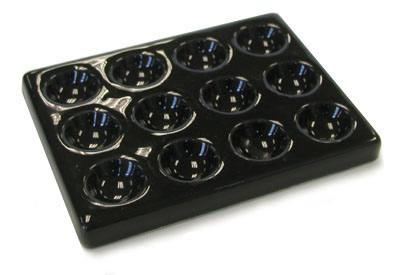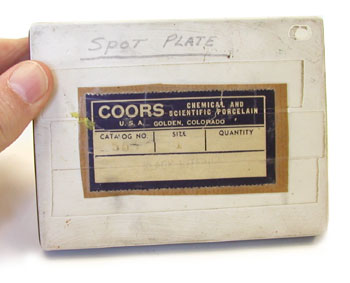Uranium Containing Spot Plate (ca. 1960s, 1970s)
This example of a black spot plate (ca. 3 1/2" x 4 1/2" x 3/8") was produced by Coors of Golden, Colorado.


Yes, the same people that brew beer are also in the ceramics industry. And they even used uranium, something that Colorado has in abundance, to produce the black glaze seen here! However, as I understand it, Coors stopped making these black spot plates in 1989. A shame. What other ceramic/porcelain products have employed a black uranium-containing glaze, I don't know, although I have heard that uranium was used to produce a black glaze for some designer toilets. A veritable "hot seat" if true!
Spot plates have several possible functions. For example, they are used to hold solutions undergoing analyses that involve some type of color change or precipitation. If a dark color or precipitate is being looked for, a white spot plate (non-radioactive) would be used. If a light color needs to be detected, a black spot plate would be used. Spot plates are also used for the temporary storage of small samples.
